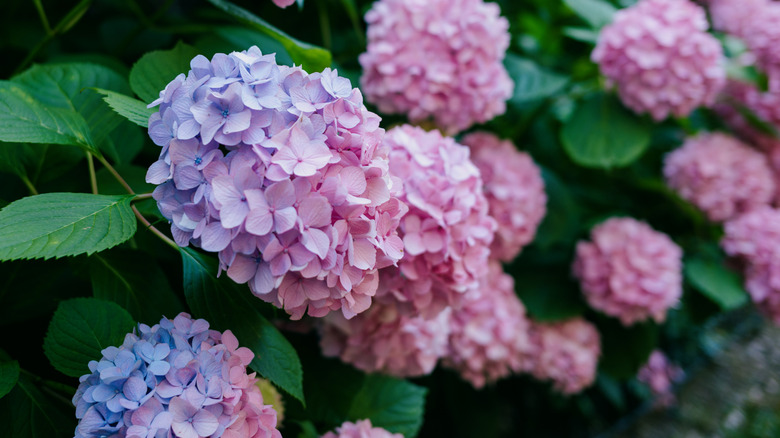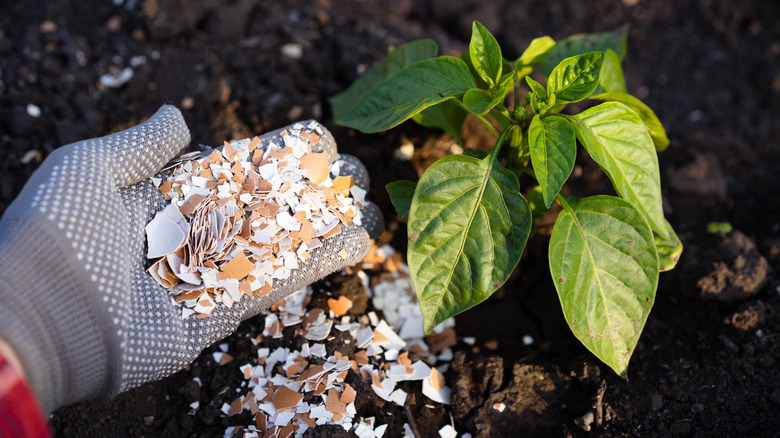The Common Scrap That Could Magically Change The Color Of Hydrangeas
Every time you crack an egg and discard the shell, you might be tossing away a hidden tool that could help you take care of your hydrangea plant in a surprising way. Eggshells seem like ordinary kitchen waste, but in the garden, they can do much more than you'd expect, especially when it comes to the color of your blooms. Hydrangeas are one of the few plants whose flower color responds to changes in soil chemistry — however, note that this only applies to Hydrangea macrophylla or Hydrangea serrata species.
When the soil is more acidic (pH below 6.5), hydrangeas absorb more aluminum and produce blue flowers. But as the soil becomes more alkaline (pH above 6.5), aluminum becomes harder to absorb, and those same flowers shift to pink or even purple. That's where eggshells come in. Eggshells are made up mostly of calcium carbonate, a natural form of lime. When you crush and add them to your garden bed, you slowly introduce calcium into the soil. Over time, this can increase the pH level and gently move your hydrangeas along the color spectrum, from cool blues to soft pinks or purples. This is a slow process.
You won't see results in days or even weeks. In most cases, it takes several months, and sometimes over a year, to notice a full change. But this gradual approach not only helps your soil stay healthy, it also gives you more natural control over how your hydrangeas look. Apart from changing the color of your hydrangeas, eggshells also control pests. Their jagged edges create a rough surface that deters soft-bodied pests like slugs or snails from crawling near vulnerable stems and leaves.
How to use eggshells without harming your soil
Once you've decided to use eggshells around your hydrangeas, it's important to apply them the right way. One of the easiest ways to use eggshells as a plant fertilizer is to sprinkle crushed shells directly around the base of the plant. Start by rinsing and drying the eggshells, then crush them into small, jagged pieces. Large chunks won't break down quickly, and shell halves can trap water, creating tiny pools that attract mosquitoes. Apply a light handful every few weeks during the growing season. Over time, this slow release of calcium can influence the soil's pH and gradually change your bloom color. Make sure the shells aren't crowding the roots, and don't use them in large amounts all at once.
If you want to go beyond sprinkling, you can mix eggshells into compost, blend them into potting soil for new plants, or even steep them in hot water to create a mild calcium tea. Just avoid using eggshells around plants that prefer acidic soil, like blueberries and camellias. While you're at it, you can also try using orange peels around hydrangeas to boost soil health and deter pests. But before you try any of these methods, test your soil's pH to get a better idea of how much change is actually needed. Like any natural method, results won't appear overnight. So, keep an eye on your plants over the course of a few months to notice changes in hydrangea bloom color or overall health.

